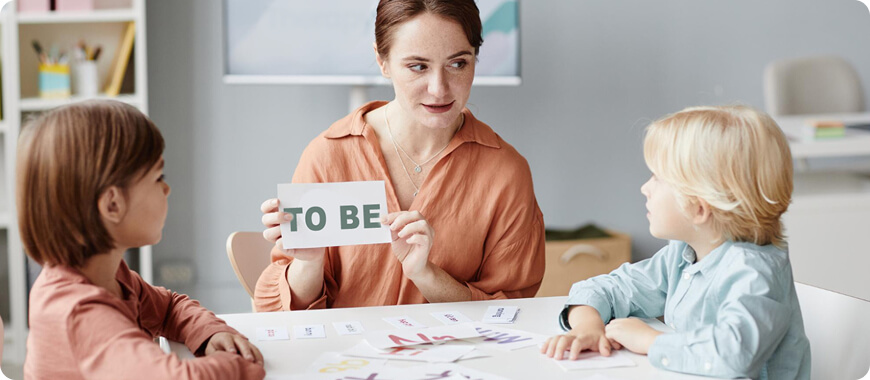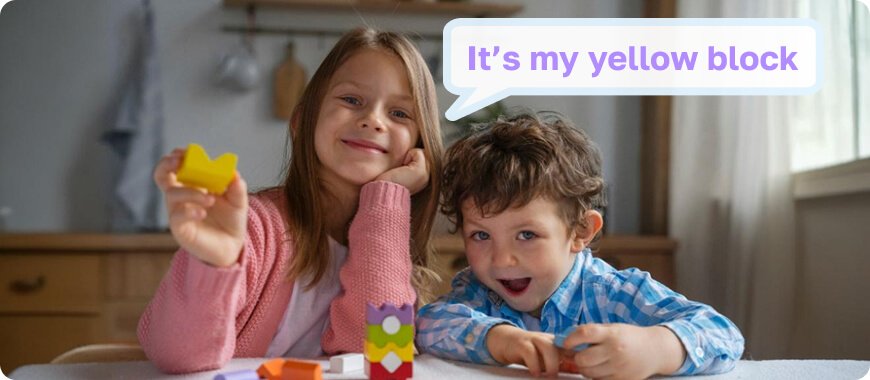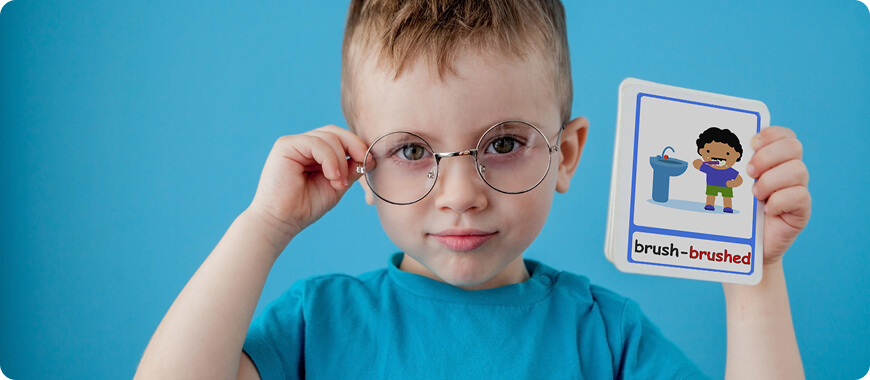If your child is learning English, there is one verb they must master before anything else — “to be”. It is the most common, most essential, and most irregular verb in the English language. Without it, they cannot form basic sentences. With it, they unlock the door to fluency. At Learnlink, we have spent two decades helping children understand, use, and love this verb — not through drills or worksheets, but through real-life context, playful interaction, and gentle repetition.
Why the Verb “To Be” Is the Most Important (and Tricky!) for Kids
The verb “to be” is not just another word. It is the foundation of English grammar. It links subjects to descriptions, locations, emotions, and states of being. Children use it every time they say “I am hungry”, “She is my sister”, or “They were at school”. Yet, it changes form depending on the subject and the tense — making it confusing for young learners. Unlike regular verbs, “to be” does not follow predictable patterns. That is why it requires special attention — and the right teaching method.
Key reasons “to be” matters:
- It is the most common verb in English.
- It functions as both a main verb and an auxiliary verb.
- It is essential for forming questions and negatives.
- It is used in all tenses: present, past, future, perfect, continuous.
- It appears in nearly every basic sentence a child will speak or write.
- Understanding what the verb “to be” does — and how it behaves — is the first step toward mastering English tenses, questions, negatives, and even more complex structures like the present perfect or past continuous.
All Forms of “To Be” Explained
Present Tense: Am, Is, Are — When to Use Each
In the simple present tense, “to be” takes three forms: am, is, are.
Rules:
- Use “am” only with the pronoun “I”.
Example: I am seven years old. I am learning English.
- Use “is” with singular third-person subjects: he, she, it, or any singular name or noun.
Example: She is clever. Tom is my friend. The cat is sleeping.
- Use “are” with plural subjects and “you” — whether singular or plural.
Example: You are kind. We are happy. The children are playing.

Past Tense: Was, Were
In the simple past tense, “to be” becomes “was” or “were”.
Rules:
- Use “was” with I, he, she, it.
Example: I was tired. She was at the park. The dog was loud.
- Use “were” with you, we, they.
Example: You were late. We were excited. They were dancing.
Common mistake to correct:
- Incorrect: They was playing.
- Correct: They were playing.
Past Participle: Been
In perfect tenses, “to be” takes the form “been” — always used with “have”, “has”, or “had”.
Rules:
Use “been” after “have” or “has” to talk about experiences, states, or actions that started in the past and connect to the present.
- I have been to London.
- She has been my teacher for two years.
- They have been happy all day.
Use “been” after “had” to talk about something that happened before another past moment.
- I had been tired before I took a nap.
- She had been here when you called.
Important notes:
“Been” is never used alone. It always needs a helper: have, has, or had.
Common structures children will hear and use:
“Have you ever been…?” → “Yes, I have been to the zoo.”
“She has been…” → “She has been sick.” / “She has been at school.”
“We have been…” → “We have been waiting.” / “We have been friends since Monday.”
Tip for parents: Use “have been” and “has been” naturally in daily conversation. Children absorb the pattern through repetition — not explanation.
H3: Contractions Made Easy: I’m, You’re, He’s, They’re
Children naturally gravitate toward contractions because they are shorter and faster to say. These are not optional — they are part of natural spoken English.

Examples in use:
- I’m ready for school.
- You’re my best friend.
- He’s running fast.
- They’re eating lunch.
- She isn’t here today.
- We aren’t going to the park.
Tip: Encourage your child to listen for contractions in songs, cartoons, and everyday speech. Repetition builds instinct.
“To Be” in Questions and Negatives
Forming questions with “to be” is simple: invert the subject and the verb.
Examples:
- Statement: She is happy. → Question: Is she happy?
- Statement: They are here. → Question: Are they here?
- Statement: I am ready. → Question: Am I ready?
Forming negatives: Add “not” after the verb.
Examples:
- I am not tired. → I’m not tired.
- He is not here. → He isn’t here.
- They are not hungry. → They aren’t hungry.
Important: In spoken English, contractions are preferred. Teach both forms, but prioritise the contracted version for natural conversation.
Games & Activities to Practice “To Be” (No Worksheets Needed!)
Game 1: “Mirror, Mirror” — Act Out “I am angry / She is tired”
How to play:
- Stand in front of a mirror or face each other.
- Take turns acting out emotions or states using full sentences.
Examples: “I am sleepy!” (yawn dramatically), “She is excited!” (jump up and down), “They are scared!” (hug yourself and shake).
Why it works: Movement and expression help embed grammar into memory.
Game 2: “Who Am I?” — Guess the Person with “He is…”, “She is…”
How to play:
- Attach a picture of a character or family member to the child’s back.
- The child asks yes/no questions using “to be”: “Am I a girl?”, “Is he strong?”, “Are they real?”
- First to guess correctly wins.
Game 3: “Yesterday vs Today” — Practice “was / were” with a Calendar
How to play:
- Use a wall calendar or draw one.
- Point to “today” and “yesterday”.
- Take turns making contrasting sentences: “Today I am happy. Yesterday I was sad.” / “Today we are at home. Yesterday we were at the beach.”
Game 4: “Emotion Dice” — Roll & Say “I am…” / “They are…”
How to play:
- Create or print a dice with six emotions: happy, tired, angry, excited, sleepy, silly.
- Roll the dice and say a full sentence: “I am silly!”, “My friends are excited!”, “The dog is sleepy!”
- Record the sentences and play them back for self-correction and fun.
Game 5: “To Be” Song with Actions
Lyrics (to the tune of “If You’re Happy and You Know It”):
Verse 1:
If you’re learning English, say “I’m!” (I’m!)
If you’re learning English, say “I’m!” (I’m!)
He is, she is, it is too —
We are, they are — yes, it’s true!
If you’re learning English, shout “I’m!” (I’M!)
Add claps, stomps, or jumps to reinforce rhythm and retention.
How Learnlink Makes “To Be” Easy
We teach “to be” the way kids learn best — through real talk, not textbooks. No drills. No pressure. Just fun, focused lessons where children speak, play, and absorb grammar naturally — with native British teachers who know how to make every “I’m”, “She is”, and “They were” stick.
Your child won’t just learn the rules. They’ll use them — confidently, correctly, and without fear of mistakes.
Book a free trial lesson today — and watch them say their first full sentence with “to be” before the week is out










